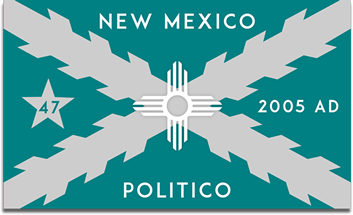I have been a registered Republican since I was 18 years old but have been active politically long before that. In my short time I have seen many changes in the party of Lincoln: the peak in influence of the neoconservative Bush Doctrine in the early 2000s, the rebirth of the Tea Party a decade later, to the protectionist, nationalist, and “alt-right” wave currently in vogue in some segments of the GOP.
The term “alt-right” has been around for a while but came into mainstream parlance in the 2016 Presidential election cycle. To be sure, right wing thinking in the U.S. is varied, and a number of people on the right could claim the mantle of alternative right. Specifically, the members of the alternative right that are worrisome are those on extreme right-wing movement who support white supremacy, white nationalism, and xenophobia. The “alt” part means “alternative” because it is a separate movement attempting to replace the constitutional conservative right.
Until the unexpected rise of Donald Trump, the alt-right was relegated to the political fringe; an inconsequential (largely online) spectacle. But after Trump’s unexpected electoral victory, that all changed. A number of people close to him, including Roger Stone and his son Donald Jr., have shared images on social media of Pepe the Frog, the favorite symbol of the alt-right.
As recently as last summer, White House chief strategist Stephen Bannon, the former head of Breitbart News, called Breitbart “the platform for the alt-right.”
Now, while the alt-right claims President Trump as its own, he himself has not explicitly embraced the alt-right. Mr. Trump doesn’t seem to care where his support comes from, regardless of whether they are right or wrong on any given topic. This is precisely why the alt-right is now more relevant than ever before.
The aftermath of the Charlottesville chaos – a violent encounter between white supremacist brutes and Antifa hooligans resulting in the death of one person – has awkwardly exposed the support the alt-right has enjoyed from key members of the Trump campaign. It is the reason his initial response of “violence on many sides” was weak.
President Trump has been quick to denounce an American judge of Mexican descent, the parents of a fallen Muslim U.S. soldier, and even his own Attorney General, but it took him two days and tremendous pressure for him to call out white supremacist violence; then in true Trump fashion, he inflamed rather than defused the situation the following day. Following those remarks white nationalists felt vindicated: former KKK leader David Duke praised Trump’s “courage” and “honesty”.
Doña Ana County’s own Hispanic Republican Party chairman Roman Jimenez seemed to channel some of the alt-right in his blanket and racist accusation that “blacks and minorities want to kill whites and police”. Part of me wonders if his unhinged commentary was partially due to frustration with some of the media painting the entire right as part of the alt-right (even though the alt-right generally hates the constitutional conservative right). That could motivate otherwise rational people into believing that they are members of the alt-right and in a knee-jerk reaction defend the xenophobic alt-right because they are confused about where they fall on the political spectrum.
Make no mistake: the racist alt-right and violence at their hands is indefensible. But it is patently wrong to ignore violent leftist groups like Antifa (remember the Berkeley riots in February?). Unfortunately, when Antifa Marxists successfully kill free speech, they can drive uninformed people into a false binary choice of supporting the alt-right, instead of rejecting “whataboutism” and calling out the violence on both sides.
The Republican Party is at a critical crossroad. We cannot claim to be the party of Lincoln if we equivocate in condemning white supremacy. If the GOP wants to have a future in New Mexico and the country as a whole, leaders in the Republican Party have a moral responsibility to denounce racists no matter how many of them wear Make America Great Again hats. For better or worse, the GOP brand is currently inseparable from President Trump, hurting the ability of the party to engage in meaningful dialogue with areas of the country with large minority populations like New Mexico.
But that does not mean party leaders shouldn’t try. After all, Democrats have a tendency to take Hispanic voters for granted – take a look at President Obama, a.k.a. the “Deporter-in-Chief”. And with Santa Fe under the control of the Democratic Party for an overwhelming majority of New Mexico’s existence, Hispanics – and all New Mexicans for that matter – are tired of the status quo, “business-as-usual” Santa Fe mentality.
It is said the definition of insanity is trying the same thing over and over and expecting a different result. If Republicans cannot successfully articulate their vision for a better and more prosperous New Mexico that will likely continue to describe the legislative outcome in Santa Fe.

